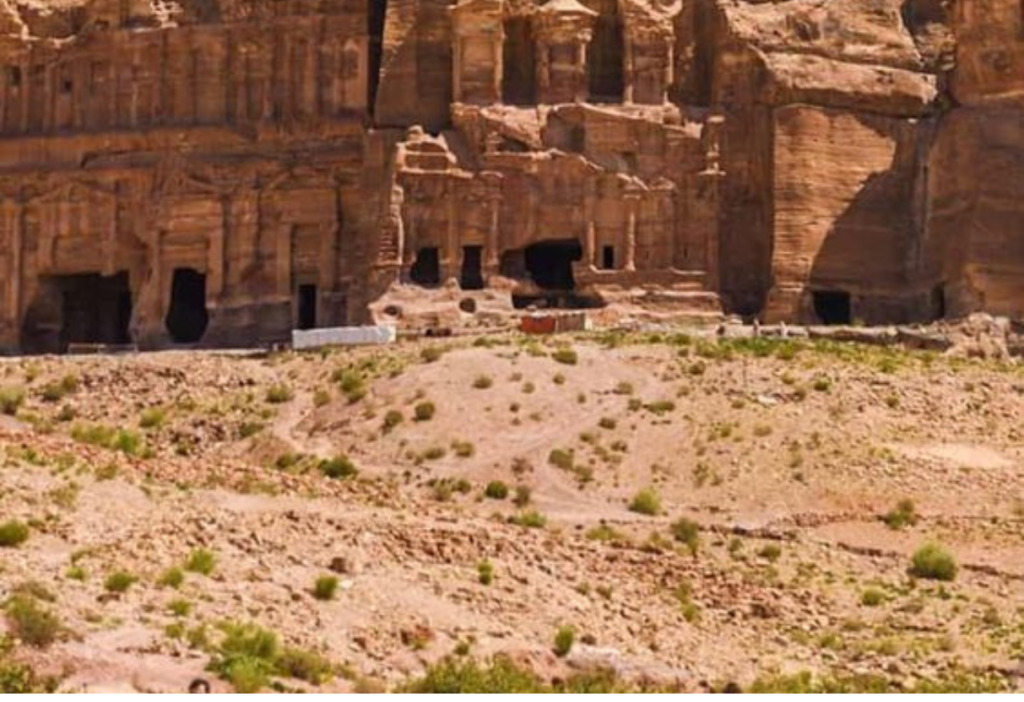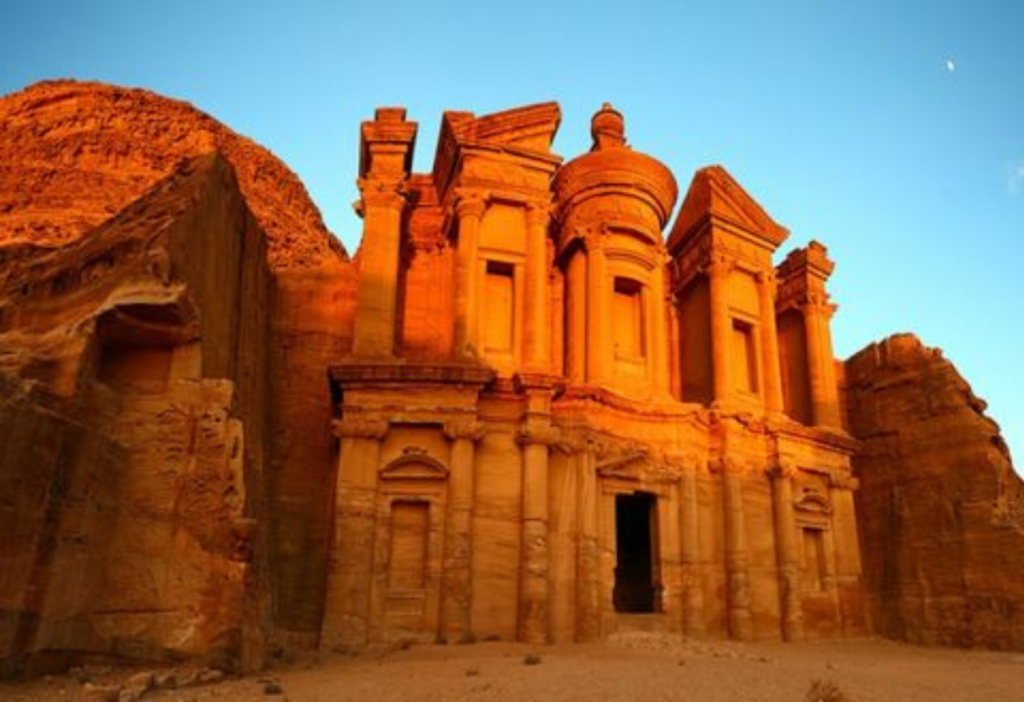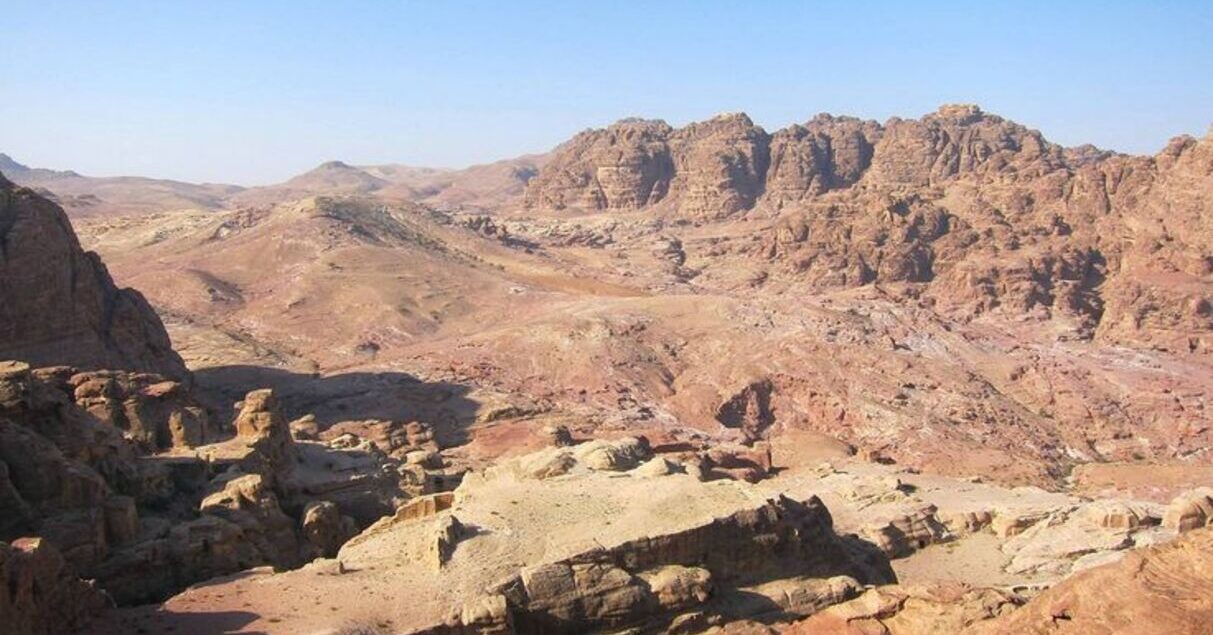Mountains of Jordan: A Guide to the Country’s Stunning Peaks
The mountains of Jordan are a breathtaking sight to behold. From the towering peaks of the Ajloun Mountains to the rugged terrain of the Dana Biosphere Reserve, these natural wonders offer a unique and unforgettable experience for visitors.

Image credit: Hand Luggage Only Pinterest
As you explore the mountains of Jordan, you’ll discover a rich history and culture that has been shaped by the rugged landscape. From ancient ruins and historic villages to modern cities and bustling markets, there is something for everyone to discover.
Whether you’re an avid hiker looking for a challenging trek or simply seeking a peaceful retreat in nature, the mountains of Jordan offer a wealth of opportunities to explore, discover, and connect with the natural world. So pack your bags, grab your hiking boots, and get ready for an adventure you’ll never forget!
Geography of Jordan’s Mountains

Image credit: Hand Luggage Only Pinterest
Jordan is a country that is known for its diverse landscape, which includes mountains, deserts, and valleys. The mountains in Jordan are an important part of its geography and have played a significant role in shaping the country’s history and culture.
Major Mountain Ranges
The major mountain ranges in Jordan are the Ajloun Mountains, the Dead Sea Mountains, and the Dana Mountains. The Ajloun Mountains are located in the northern part of the country and are known for their lush forests and scenic hiking trails. The Dead Sea Mountains are located in the west and are home to the lowest point on Earth, the Dead Sea. The Dana Mountains are located in the south and are known for their rugged terrain and stunning views.
Notable Peaks
Some of the notable peaks in Jordan include Jabal Umm ad Dami, Jabal Rum, and Jabal al-Madhbah. Jabal Umm ad Dami is the highest peak in Jordan, standing at 1,854 meters above sea level. Jabal Rum is located in the Wadi Rum desert and is a popular destination for rock climbers and hikers. Jabal al-Madhbah, also known as the Mountain of Altars, is located in Petra and is home to several ancient Nabatean altars.
In conclusion, the mountains of Jordan offer a unique and diverse landscape that is worth exploring. Whether you are a hiker, a climber, or just someone who appreciates natural beauty, Jordan’s mountains have something to offer.
Geology of Jordanian Highlands

Image credit: Helena Bradbury Pinterest
The Jordanian Highlands are located in the western part of Jordan and are characterized by their rugged terrain and steep slopes. The geology of the Jordanian Highlands is diverse, with a variety of rock formations and tectonic activity that have shaped the landscape over millions of years.
Rock Formations
The Jordanian Highlands are primarily made up of sedimentary rocks, including sandstone, limestone, and shale. These rocks were formed over millions of years through the accumulation of sediment on the ocean floor. As the sediment was buried and compressed, it hardened into rock.
One of the most notable rock formations in the Jordanian Highlands is the Wadi Rum sandstone. This distinctive red sandstone is found throughout the region and has been shaped by wind and water erosion over thousands of years. The sandstone has also been carved into canyons, arches, and other unique rock formations, making it a popular destination for tourists and adventure seekers.
Tectonic Activity
The Jordanian Highlands are situated at the intersection of several tectonic plates, which has resulted in significant seismic activity over the years. The region is part of the Dead Sea Transform fault system, which is a major fault line that runs from Turkey to Mozambique.
The tectonic activity in the Jordanian Highlands has led to the formation of several mountain ranges, including the Ajloun Mountains and the Dana Mountains. These ranges are characterized by their steep slopes and rugged terrain, and are home to a variety of plant and animal species that have adapted to the harsh environment.
Overall, the geology of the Jordanian Highlands is a testament to the power of natural forces over time. The region’s unique rock formations and tectonic activity have created a landscape that is both beautiful and awe-inspiring, and continues to draw visitors from around the world.
Ecology and Biodiversity

Image credit: History Fangirl Pinterest
Flora
Jordan’s mountains are home to a diverse range of plant life, thanks to the country’s varied topography and climate. The flora of Jordan’s mountains includes a mix of desert and Mediterranean species, with many endemic to the region. Some of the most common plants found in Jordan’s mountains include juniper, oak, pistachio, and wild olive trees, as well as various shrubs and herbs.
One of the most notable plant species found in Jordan’s mountains is the Dead Sea sparrowgrass, which is endemic to the region and only grows in a few locations. This plant is adapted to the harsh desert environment and has a unique appearance, with long, thin leaves and small white flowers.
Fauna
Jordan’s mountains are also home to a variety of animal species, including many that are rare or endangered. Some of the most notable animals found in the region include the Nubian ibex, a type of wild goat that is well adapted to the rocky terrain of the mountains, and the Arabian oryx, a large antelope that was once extinct in the wild but has been successfully reintroduced to the region.
Other animal species found in Jordan’s mountains include wolves, foxes, hyenas, and various species of birds, including eagles, vultures, and owls. Many of these animals are adapted to the harsh desert environment and have unique adaptations that allow them to survive in the mountains.
Overall, the mountains of Jordan are an important ecosystem that supports a wide range of plant and animal life. Despite the challenges posed by climate change and human development, efforts are being made to preserve these unique habitats and protect the biodiversity of the region.
Cultural Significance

Image credit: Hand Luggage Only Pinterest
Historical Sites
Jordan’s mountains are not only natural wonders, but also hold great cultural significance. The mountains are home to many historical sites, including the ancient city of Petra, which is a UNESCO World Heritage Site. Petra was the capital of the Nabataean Kingdom, and is famous for its rock-cut architecture and water conduit system. The mountains also house the ruins of the Roman city of Jerash, which is known for its well-preserved architecture and impressive amphitheatre.
Modern Relevance
The mountains of Jordan continue to hold cultural significance in modern times. For example, the city of Amman, which is nestled in the mountains, is the capital of Jordan and the country’s economic, political, and cultural centre. The mountains also play a significant role in Jordan’s tourism industry, with many visitors coming to explore the ancient ruins and natural beauty of the area.
In addition, the mountains are home to many Bedouin tribes, who have lived in the area for centuries and have a rich cultural heritage. The Bedouin people are known for their hospitality, and visitors to the mountains can experience their traditional way of life by staying in Bedouin camps, sampling their cuisine, and learning about their customs and traditions.
Overall, the mountains of Jordan are not only breathtaking natural wonders, but also hold great historical and cultural significance. Whether you are interested in exploring ancient ruins, experiencing traditional Bedouin culture, or simply enjoying the stunning scenery, the mountains of Jordan have something to offer everyone.
Tourism and Recreation

Image credit: Memphis Tours Pinterest
Hiking Trails
Jordan is home to some of the most stunning mountain ranges in the world, and hiking enthusiasts will find plenty of opportunities to explore them. The most popular hiking trails include the Wadi Mujib Trail, the Dana to Petra Trek, and the Jordan Trail. These trails offer breathtaking views of the mountains, valleys, and canyons, and provide a unique opportunity to experience the natural beauty of Jordan up close.
The Wadi Mujib Trail is a challenging hike that takes you through a stunning canyon with waterfalls and pools. The Dana to Petra Trek is a multi-day hike that takes you through the Dana Biosphere Reserve and ends at the ancient city of Petra. The Jordan Trail is a long-distance hiking trail that spans the length of the country, taking you through some of the most beautiful and remote areas of Jordan.
Conservation Efforts
Jordan is committed to preserving its natural heritage, and there are several conservation efforts underway to protect its mountain ranges. The Royal Society for the Conservation of Nature (RSCN) is responsible for managing several protected areas, including the Dana Biosphere Reserve and the Wadi Rum Protected Area. These areas are home to a wide variety of plant and animal species, some of which are endangered.
The RSCN also works with local communities to promote sustainable tourism and protect the environment. Visitors to the mountains of Jordan are encouraged to respect the natural environment and to follow responsible tourism practices. By doing so, you can help to ensure that these stunning landscapes are preserved for future generations to enjoy.
Frequently Asked Questions

Image credit: Hand Luggage Only Pinterest
Which peak is considered the most famous mountain in Jordan?
The most famous mountain in Jordan is Mount Nebo, which is believed to be the place where Moses saw the Promised Land before he died. It is located in the Jordanian Highlands and offers stunning views of the Jordan Valley.
What are the major mountain ranges located in Jordan?
Jordan is home to several major mountain ranges, including the Jordanian Highlands, Ajloun Mountains, and the Dead Sea Hills. The Jordanian Highlands are the most extensive range and are known for their scenic beauty and historical significance.
How does the topography of the Jordanian Highlands contribute to the country’s geography?
The Jordanian Highlands are a crucial part of Jordan’s geography and contribute to its unique landscape. The highlands are responsible for the country’s fertile soil, which supports agriculture and sustains the population. Additionally, the highlands are home to several important rivers, including the Jordan River and the Yarmouk River.
Can you list some key facts about the mountains in Jordan?
- Jordan is home to several mountain ranges, including the Jordanian Highlands, Ajloun Mountains, and the Dead Sea Hills.
- The highest peak in Jordan is Jabal Umm ad Dami, which stands at 1,854 meters (6,083 feet).
- The mountains in Jordan are rich in history and culture and are home to several important religious sites, including Mount Nebo and the Baptism Site.
What role do rivers play in the mountainous regions of Jordan?
Rivers play a critical role in the mountainous regions of Jordan. They provide water for irrigation and support the country’s agriculture, which is essential for the economy. Additionally, the rivers are a vital source of drinking water for the population.
How does the mountainous terrain influence the climate of Jordan?
The mountainous terrain in Jordan plays a significant role in the country’s climate. The highlands receive more rainfall than the surrounding areas, which contributes to the country’s agricultural productivity. Additionally, the mountains act as a barrier, preventing the hot desert winds from reaching the interior of the country, which helps to moderate the temperature.
Jordan latest travel updates: US, AU , CA , UK
